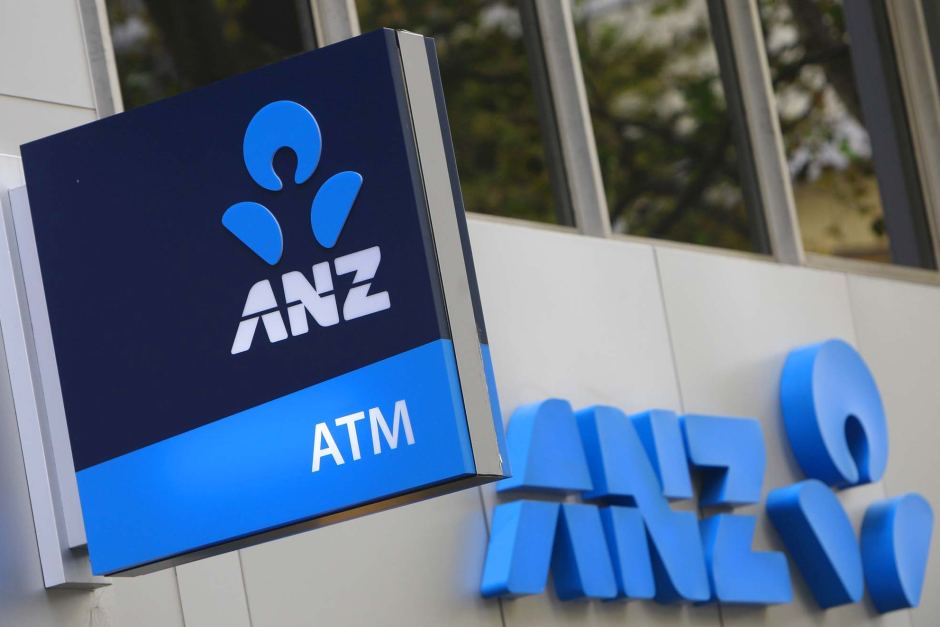Category: Banking / Mining Industry / Company News
Commodity crash starts to bite major banks
Thursday, 24 Mar 2016 06:06:31 | Michael Janda And Peter Ryan

ANZ bank logos are displayed on signs outside a bank branch in Sydney in April 2011. (AAP: Sergio Dionisio, file photo)
The commodity price crash that has already decimated Australian mining profits now looks set to hit the earnings of the nation's major banks.
ANZ has flagged a $100 million-plus increase in its bad debt provisions over the past month due to resources sector exposures.
The ABC understands that the increase in bad debts relates largely to ANZ's loans to coal mining giant Peabody Energy and South Australian iron ore and steel producer Arrium.
The ABC reported earlier this month that US-owned Peabody Energy is likely to seek Chapter 11 bankruptcy protection in America, while Arrium is struggling to secure private and public funding to keep it afloat.
ANZ's acting chief financial officer (CFO) Graham Hodges said the bank is ensuring that investors are kept up-to-date with any change in its bad debt outlook.
"While the overall credit environment remains broadly stable, we are continuing to see pockets of weakness associated with low commodity prices in the resources sector and in related industries," he said in a statement to the ASX.
"This is a challenging part of the cycle for these customers with implications for the banking sector as individual circumstances evolve."
The bank had already disappointed investors by lifting its credit charge to more than $800 million in a trading update just over a month ago - $65 million more than most analysts had expected.
That increase was due to a rise in bad debts throughout its Asian customers, as the region's economy slows down.
ANZ has been punished by investors, in early trade on the ASX its shares were down 3.7 per cent to $24.40 by 10:20am (AEDT), with other banks down less than half that.
Westpac warns about 'pockets of stress' for households
Westpac's head of consumer banking George Frazis said the current risk environment looks fairly good for the bank, with 74 per cent of customers ahead on repayments, low interest rates and improving unemployment.
Mr Frazis said the bank is confident the Australian housing market will remain strong overall, but some areas are already feeling pain.
"At a micro level, there are pockets of stress, and we're primarily seeing this in Western Australia and Queensland," he observed.
Responding to a question from the ABC, Mr Frazis said the rising stress in these pockets was likely to translate to a 10 per cent increase on the previous corresponding period in bad debt provisions.
"It's around about a $25 million impact in terms of an increase in provisions ... obviously we're ramping up our collections, so this is something we'll make sure we keep under control."
Westpac's CFO Peter King also added that the bank may need to increase bad debt provisions for five large corporate clients.
Rising loan losses to dent bank profits: Morgan Stanley
After years of profiting from a reduction in bad and doubtful debts following the bounce back from the global financial crisis, bank analysts now say rising loan losses will be a headwind for profits.
Morgan Stanley's analysts forecast an earnings headwind of around 4 per cent per annum over the next two years, and that is assuming the national housing market does not weaken substantially.
"Lower write-backs and the non-recurrence of collective provision releases will be the key reason why impairment charges increase from bottom-of-the-cycle levels," Morgan Stanley predicted in a note.
"However, we also expect 'pockets of weakness' in the domestic economy, emerging single name exposures and a softer economic environment to drive higher loan losses in the second half of 2016 (estimates) and financial year 2017 (estimates)."
Morgan Stanley said Westpac remains its preferred big four bank due to a stronger capital position and lower risk profile than other major banks.
The investment bank is more cautious on the Commonwealth Bank, but still rates it a hold, and has a sell on NAB and ANZ.
In the case of ANZ, the bank's Asian exposure and higher domestic non-housing loss rates are the main reasons for Morgan Stanley's negative view.
The analysts see Bank of Queensland as a better bet, given its current discount to the majors.
- About Us
- |
- Terms of Use
- |
-
 RSS
RSS - |
- Privacy Policy
- |
- Contact Us
- |
- Shanghai Call Center: 962288
- |
- Tip-off hotline: 52920043
- 沪ICP证:沪ICP备05050403号-1
- |
- 互联网新闻信息服务许可证:31120180004
- |
- 网络视听许可证:0909346
- |
- 广播电视节目制作许可证:沪字第354号
- |
- 增值电信业务经营许可证:沪B2-20120012
Copyright © 1999- Shanghai Daily. All rights reserved.Preferably viewed with Internet Explorer 8 or newer browsers.




 Send to Kindle
Send to Kindle
